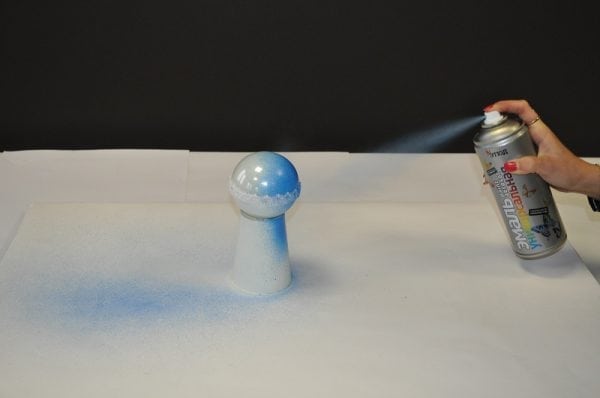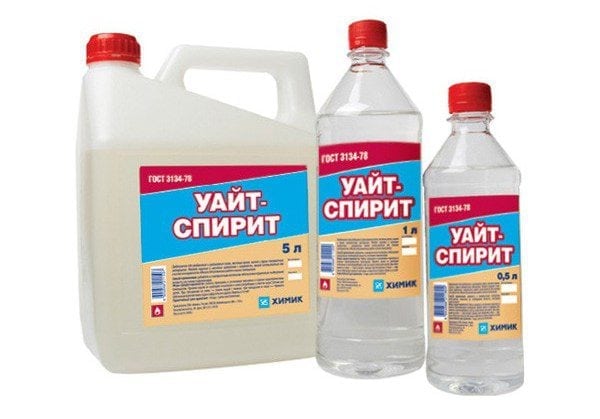Aerosol enamel is an opaque glassy composition in a spray bottle intended for application to the surface of another material. With the help of spraying, it is possible to get the composition into the most inaccessible places where it is impossible to get by other means. The main disadvantage of aerosol enamel is increased consumption due to unaccented spraying of the composition.
- Alkyd Enamel Properties
- Classification of alkyd enamels
- Enamel Choice
- The choice between alkyd and acrylic enamels

It should be noted that, from the point of view of consumer qualities, the only significant difference between aerosol enamels and compositions applied with a brush and roller is the drying time, which is on average 3-5 hours. Therefore, aerosol enamels cannot be considered separately from all other types of enamels.
The most popular type of enamel is alkyd. They will be discussed in the article.
to contents ↑Alkyd Enamel Properties
Enamel compositions of this category are made on the basis of alkyd varnish and special additives. The latter include solvents with fillers, pigmenting agents (give color), antiseptics (protect the coating from mold and mildew). As solvents for alkyd compounds White spirit acts, and the role of the filler is played by sand, crushed marble or very finely ground granite.
The basis of alkyd enamels - varnish - comes in two varieties: glyphthalic and pentaphthalic. Usually in the manufacture of paints and varnishes, pentaphthalic varnish is used, which is a viscous resin mixed with vegetable oils, glycerin and rosin.
Advantages of alkyd compounds:
- A characteristic feature of coatings treated with alkyd enamels is durability.
- Good elasticity
- Drying of painted surfaces occurs quickly enough, due to which paints and varnishes can be used for interior work.
- You can paint the facade, because the solution is moisture resistant and does not lose its qualities under temperature extremes.
- The original color of the coating is preserved, since it does not turn yellow.
- No shrinkage of the paint.
- Alkides protect the surface from rust.
- Enamel is able to withstand the effects of aggressive chemical environments.
Classification of alkyd enamels
Depending on their technical characteristics and areas of use, alkyd enamels are divided into subspecies. Each brand has its own code, consisting of letters and numbers. Using this code, you can accurately determine the purpose of the composition and its properties. For example, PF-120 is made on the basis of a pentaphthalic component; the unit means that the composition is intended for facade work, and the number 20 indicates the number in the catalog.

In addition to units, other numbers are also used:
- zero - soil-enamel;
- deuce - composition for internal work;
- troika - conservation paintwork material used to seal equipment;
- four - moisture resistant composition;
- five - paints for solving specialized tasks (scaring away animal pests, backlighting in the dark, etc.);
- six - resistance to fuels and lubricants;
- seven - chemical resistance;
- figure eight - thermally stable compounds;
- nine - electrical insulating and conductive properties.
The following are the properties of the most common alkyd enamels:
- GF-230 is a glyphthalic composition created for painting internal surfaces. However, GF-230 can be used only for painting walls and ceilings, but not floors, since the composition is unstable to mechanical stress. There are many shades of glyphthalic enamel: from light cream to dark colors. The drying time of the surface is up to 24 hours. A distinctive feature is a pronounced pungent odor.
- PF-133 is used for processing metal or pre-primed surfaces. It differs in low hiding power (20-120 grams per square meter), so the composition is applied in two layers. Drying occurs after a couple of hours. You can choose from 15 not very bright colors. The paint is intended for temperate climates, where the surface retains its performance characteristics for 5-6 years without cracking or deforming.
- PF-115 is used for painting metal, wood and other surfaces. Due to insufficient hiding power (30-120 grams per square meter), it is applied in two layers. 24 shades of high saturation and brightness paint are available to the buyer. It is applied with a spray, but a brush can also be used. Drying time varies between 8 and 24 hours.
- PF-223 is intended for coloring wood and metal. It is especially used for coloring batteries, as it is characterized by high heat resistance. The assortment range includes 17 different shades. Before use, the paint is diluted with solvent, xylene or gasoline. Full drying occurs after 30-36 hours. A characteristic feature of the paint is a pungent pungent odor.
- PF-253 is used for painting wooden floors (after priming). Paint and varnish material is applied in two layers.
- PF-126 is sold together with the filler NF-1, which serves as a hardener.
- Matte enamels are used both for interior and for facade work. This type of paint is resistant to moisture, chemicals and oils. The coating is able to tolerate temperature fluctuations from -50 to +60 degrees Celsius. It is characterized by high hiding power (90-180 grams per square meter). The composition must be diluted with white spirit or solvent.
- Aerosol enamels. As mentioned above, the main difference between enamels in spray cans from all others is the method of application, as well as faster drying.
Enamel Choice
On the store shelves you can find a wide selection of both Russian and foreign enamels. The most significant differences between domestic and imported products:
- Russian manufacturers usually do not focus on product packaging. Imported paints are available in more attractive containers.
- Domestic products are often cheaper, but this is achieved due to cheaper components, which directly affects the quality of work performed.
- Foreign enamels often contain special expensive additives that allow you to remove or at least significantly reduce unpleasant odors, accelerate the drying of the coating. In addition, imported products have a wider choice of color shades and good hiding power.
The choice between alkyd and acrylic enamels
Alkyd-based paints are widely used abroad, especially in the countries of the northern zone, where they paint 8 out of 10 buildings. Paint and varnish compositions are environmentally friendly, as their basis is ordinary water.Acrylates are used as binders.
Paints and enamels are devoid of a sharp specific smell, resistant to temperature extremes and low temperatures. Acrylic coatings retain their original color for many years.
In addition, acrylic allows you to "breathe" the base wood surface, which significantly extends the life of the material. Both acrylic enamels in spray cans and cans are on sale.
Alkyd paints and enamels have a longer track record compared to acrylic. Their use is justified mainly by lower cost. The alkyd film formed after application of the composition allows you to completely protect the surface from moisture.
Alkyd compounds are not as active as acrylic penetrate deep into the material, and therefore such coatings are not too durable. Nevertheless, alkyd solutions are used to protect the most wetted parts, as windows, entrance doors to the house, thresholds, etc. Alkyd coatings are able to withstand very low temperatures - from -30 degrees and below. Alkyd formulations are applied exclusively to dry surfaces, otherwise the exfoliation of paint is inevitable.
When buying enamel, special attention should be paid to the period of its suitability, since the fresher the composition, the better the coating. At the same time, do not go to extremes and buy the cheapest or most expensive enamel, since in order to get a decent result it is usually enough to buy a composition from the middle price category.






